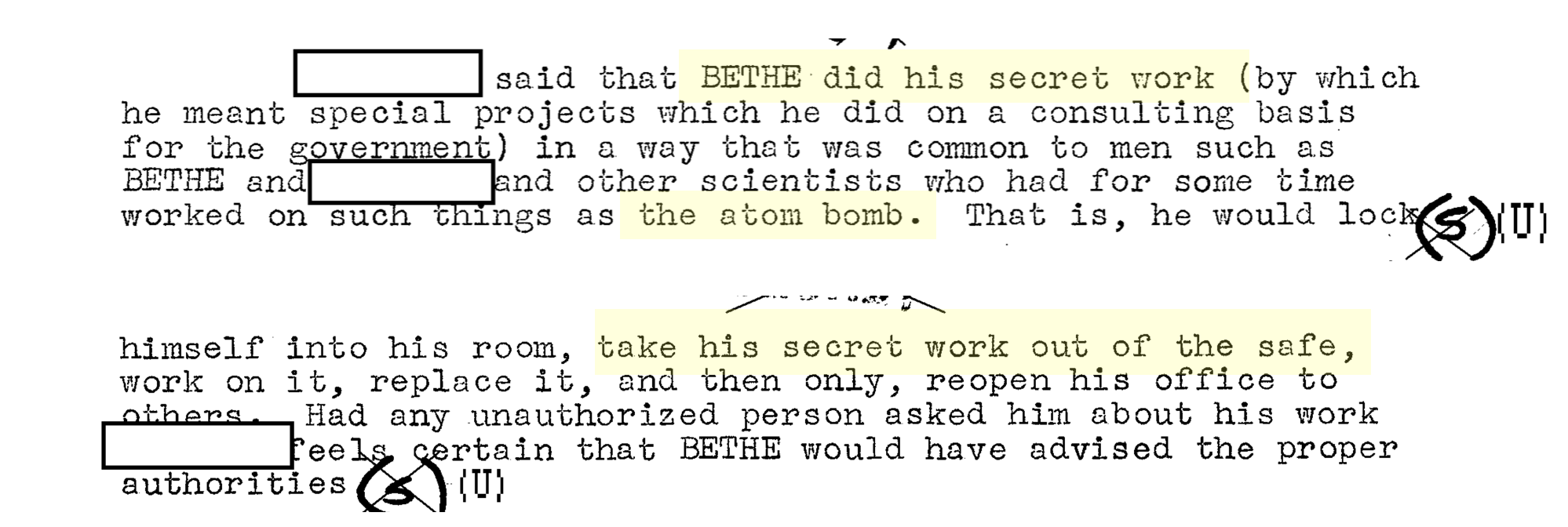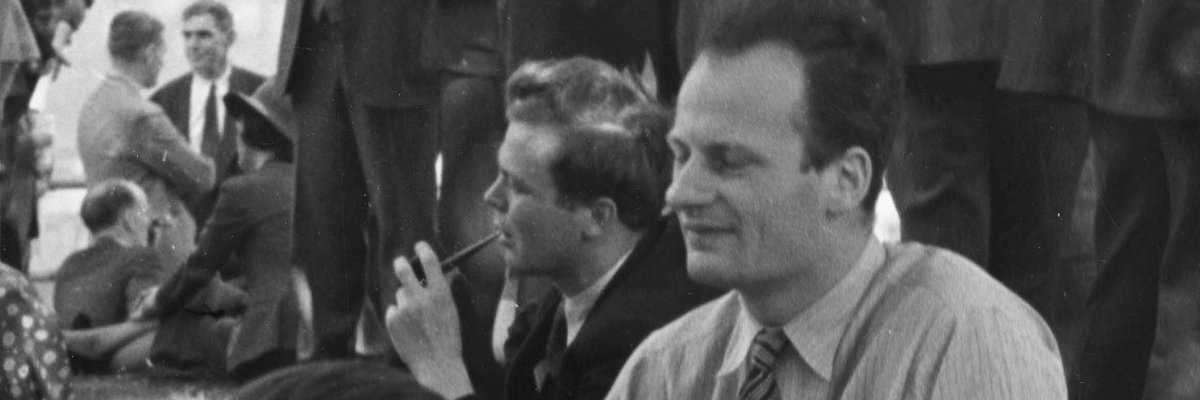After World War II, with the Manhattan Project over and the Cold War heating up, the grandfather of the atomic bomb, Professor Hans Bethe, returned to the quiet college town of Ithaca, New York to resume his research. After years of political intrigue and moral dilemma, it was a welcome return to academia. But even at remote Cornell University, an international game of spy-vs-spy would follow Bethe, complete with Soviet agents, a love triangle, and America’s most dangerous secrets.

Much of Bethe’s legacy is well known - his unstoppable scientific mind helped lead to the atomic bomb, only for him to spend the rest of his life lobbying against its further development. Bethe was dubbed America’s “scientist of conscience” for his legacy of extraordinary breakthroughs and his cognizance of the dangers they brought. But less well known is how the intrigue of the Manhattan Project trailed him no matter where Bethe went, with his secretive work helping shape the modern world order.
Bethe’s records, released publicly through a MuckRock FOIA request and the Central Intelligence Agency’s CREST database, detail how the Soviet Union and the United States deployed spies to follow and befriend the professor as he tried to start a new life after the war.
A few years later, Russia’s greatest espionage group began to unfurl with the execution of Julius and Ethel Rosenburg for treason on June 19th, 1953.
But before they were apprehended, the country’s dendritic spy network was near the height of its powers, and one operation set its sights on Bethe.

“He is hot stuff alright,” William Perl wrote to Alfred Sarant in a 1946 letter that would later be obtained by the Federal Bureau of Investigation.
Perl was an up-and-coming physicist with a doctorate from Columbia and close ties with the Rosenbergs. Sarant was also part of the Rosenberg network, and given Bethe’s recent comments about the dangers of nuclear war, the two thought there could be potential to mine him for information, whether wittingly or not.
Sarant decided to move quickly.
Through introduction by the Rosenberg network, Sarant applied to work under Bethe as a graduate student. However, his application was rejected - it was “apparent that Sarant was not qualified to enter the graduate school in physics,” claimed Bethe.
Undeterred from his objective, Sarant moves to Ithaca anyway and quickly fraternized the town physicists. Bethe notes “it was very strange”.

In November or December of 1946, Sarant obtained a job at Cornell’s particle accelerator facility. Meanwhile, with academic connections not panning out, he moved to try social entanglements, with Sarant’s wife becoming acquainted with Bethe’s wife. The FBI would eventually learn that the spy had infiltrated the Cornell Physics Department - but only four years after Sarant’s arrival. The Bureau then ‘urgently’ deployed agents to investigate.
The stakes were high: Perhaps more than anyone, Bethe understood the fundamental design and capability of American nuclear weapons. Bethe was genius, holding a top-secret “Q Clearance.” But despite his patriotic achievements providing Americas lead to obtaining the bomb, the FBI was unsure if they could trust him - before investigating Sarant, the Bureau investigated Bethe himself. Once again, the scientists public comments were drawing private scrutiny.
One of his dangerous ideas: The free exchange of scientific data.

In 1950, the Bureau made Bethe a high-profile target. “Espionage - R file be immediately opened on Hans Albrecht Bethe,” one memo from FBI headquarters ordered, to conduct a “discrete investigation … of his association with Sarant and his possible connection, if any, with the activities of the Rosenberg espionage parallel.”
The FBI trailed Bethe’s every move and produced a flurry of Teletype communications.

“Height five feet eleven inches, 190 pounds, eyes, blue, black wavy hair, very heavy and receding at forehead, has slight accent and is very precise in speech.”… “subject arrived at Idlewild airport, NYC, at 12:15 PM, EDST, on flight 935 of TWA”,… …“he was carrying a number of white manila envelopes containing manuscripts in German and mathematical formula”… “stops have been placed with customs to obtain baggage search when subject arrives”… “Material obtained … copies of mathematical formulae will be submitted [for translation].”
A month later, the FBI would determine that those suspicious smuggled notes “were unclassified studies of the scattering of charged particles.” Bethe’s original notes were not disclosed in the FOIA request.
As the FBI dug deeper, the picture remained the same: Bethe was “a gentleman and … a loyal and patriotic American citizen,” according to his colleagues.
Richard Feynman himself (who had his own FBI run-ins) states he has “great respect for his ability, personality, character, and patriotism.” The Dean of Cornell University describes Bethe as “pure scientist.”
With Bethe’s loyalty reaffirmed, concern shifted to the information he held: How close did Sarant get to what he wanted in the four years he hung around Cornell’s physics department?
Two safes, tucked away in the Cornell Physics department, were of particular concern: They contained mathematics for the top-secret Lexington Project - an “atomic motor” to power a planned flying fortress.

Whether that information was breached is unknown (although a lack of flying war fortresses in the latter years of the Cold Wars indicates the data might not have been as pivotal as it appeared), although Rosenberg was reported as having bragged about having access to it.
Meanwhile, the FBI’s net was finally tightening.
On July 17th, 1950, Rosenburg was arrested. On July 19th, Sarant’s house in Ithaca was searched. He did not wait around to see if they dug up anything incriminating.
Sarant left his wife - her efforts at befriending the Bethes not leading to much beyond a few cordial house parties — and leaves town. But he doesn’t leave alone: Together with the wife of a Cornell physicist, he takes on the assumed identity of Mr. and Mrs. Dayton and fees to Mexico on August 9, 1950.
From there the FBI’s trail - and jurisdiction - runs cold. “His present whereabouts are not known,” the file notes.
But it’s not quite the end of Sarant’s story. Upon his escape, he eventually makes it to the Soviet Union, where he leads a productive career developing electronics for the military. He had more to show for it than he did his four years in Ithaca, including building a digital computer used in Soviet submarines.
Carol Dayton, the physicists wife Sarant fled with, returned to the United States after his death in 1991.
A portion of Bethe’s FBI file is embedded below, and the rest can be read on the request page.
Image by Roger Higgins via Wikimedia Commons




